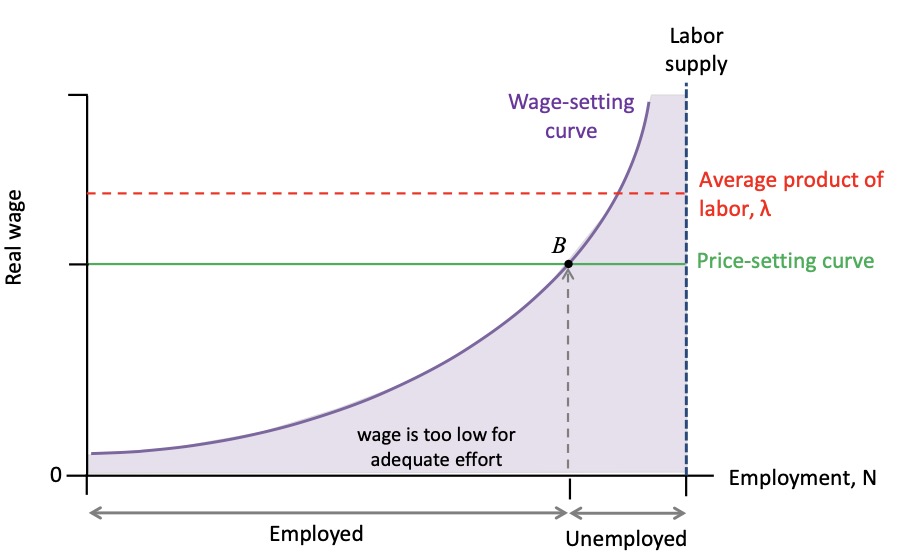05.06.2023 Tutorial 2#
Wages#

in Boom:
AD \(\uparrow\)
Firms hire more workers
Wage setting curve shifts \(\to\)
firms want more effort = more wages
price setting curve not (no increase in profits)
Smoothing#
Given
Lambda for optimal
I) Diff wr.t \(c_1\)
II) Diff w.r.t \(c_2\) $$ \frac{ dL }{dc_2} = \frac{ 1 }{1+p}\frac{ 1 }{c_2}
\lambda \big(\frac{ (1+r)*1-c_2 }{(1+r)^2}\big) \ \to c_2 = \frac{ (1+r) }{(1+p)} * \frac{ 1 }{\lambda} $$
III) Diff w.r.t lambda
Optiminzing c2#
a) Umstellen I nach Lambda
b) Using \(c_1=...\) in III
then: insert a in b
optimal
Optimize c1#
using II in III
input I (in umgestellter Form) in this
Optimal
Banks#
Profit of Bank
Profit of a commercial Bank: $\( \Pi = \frac{rL^S - r^p (L^S-D-e)}{e} -\frac{1}{2} \frac{L^S}{e}^2 \)$
r = lending rate
\(r^p\) = policy rate
\(L^S\) = credit supply
\(D\) = customer deposits
\(e\) = equity
\(\frac{ L^s }{e}^2\) = risk of losing credit money
the Interest rate and Leves of Competition
perfect competition: \(r\)
imperfect comp: \(r\)
Monopoly: \(r \uparrow\)
optimal Credit supply: Diff w.r.t \(L^S\) $$ \frac{ d \Pi }{d L^S} = \frac{ r }{e} - \frac{ r^p }{e}
\frac{ 1 }{2} * 2\frac{ L^S }{e} \frac{ 1 }{e}=0 \
\implies L^S = e (r-r^p) $$ => bank will charge above policy rate